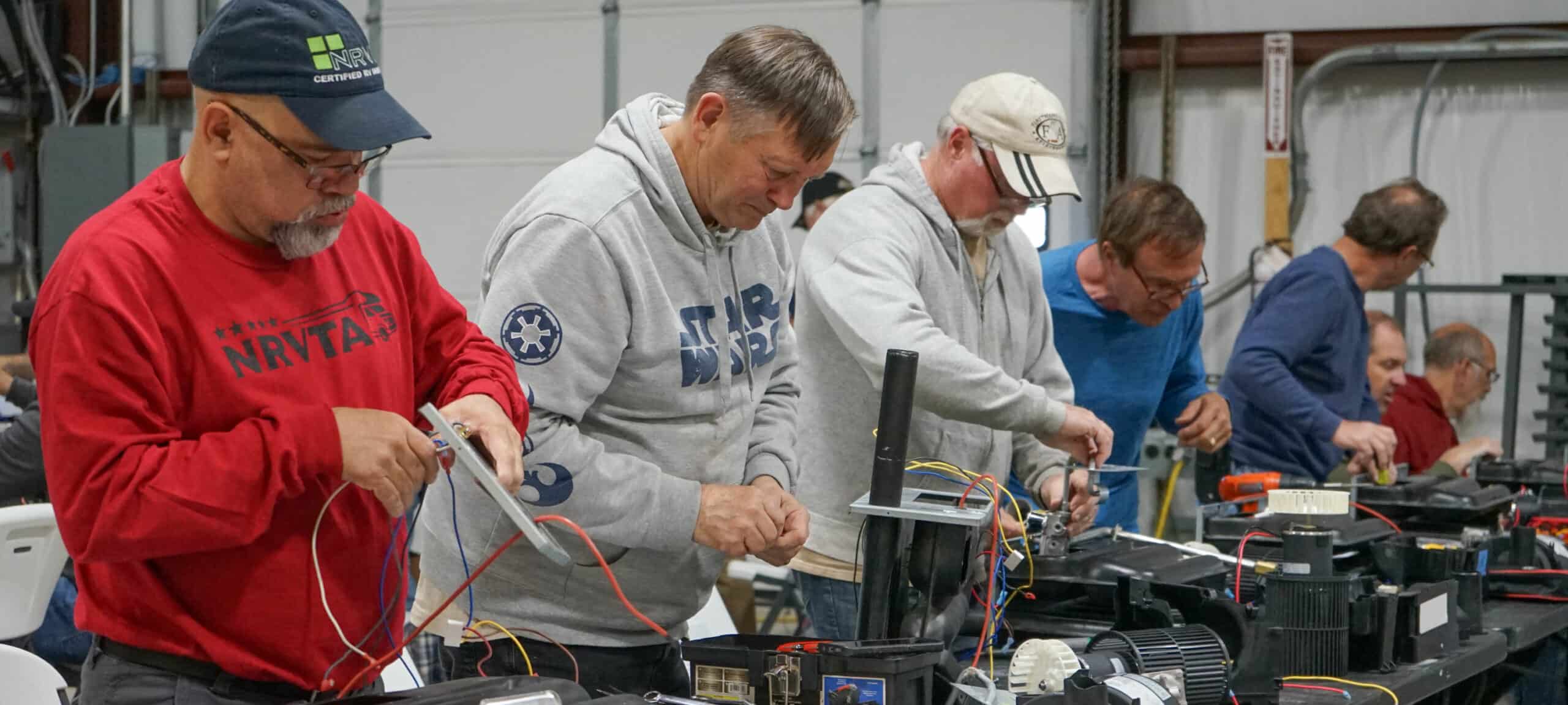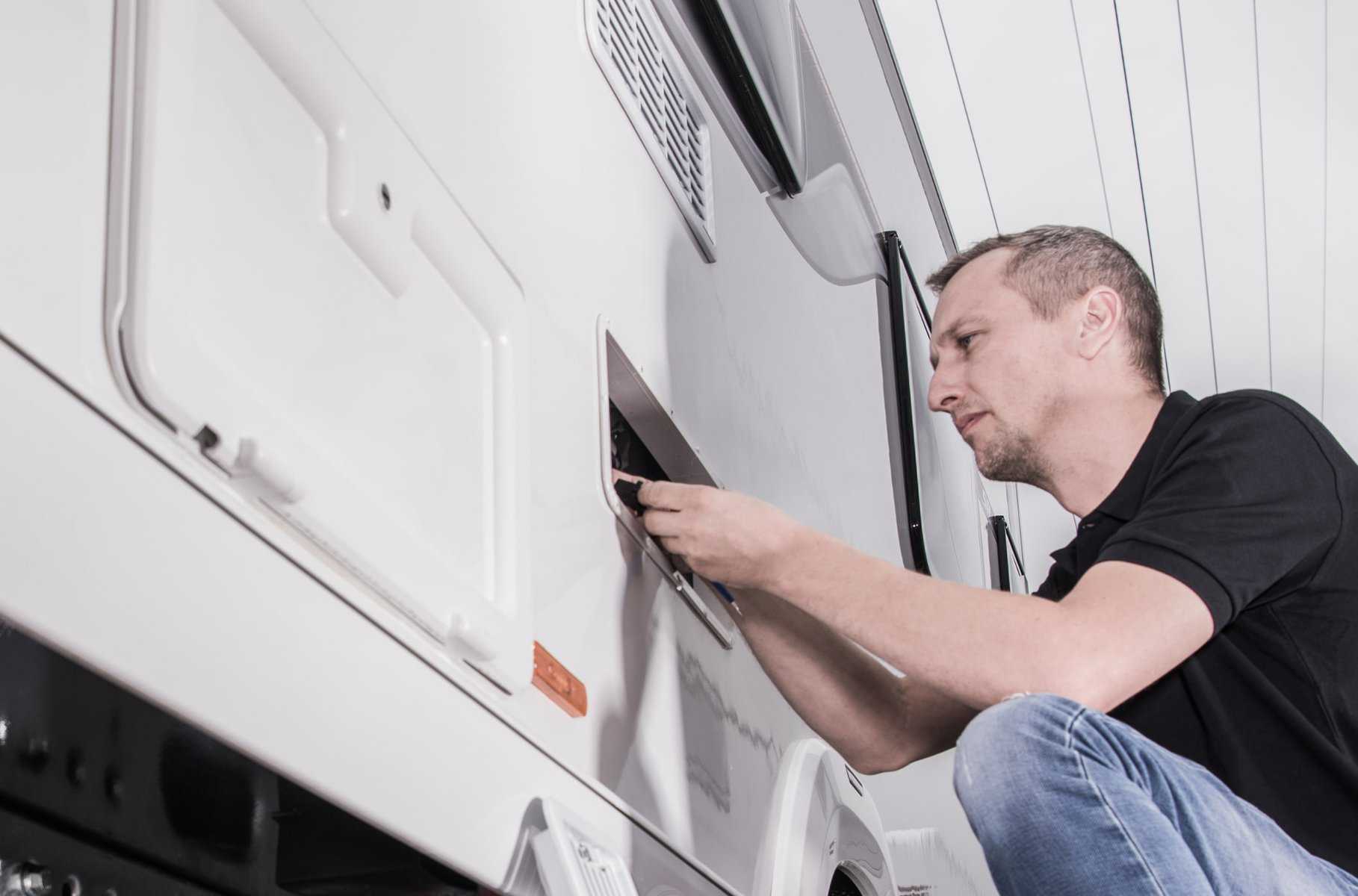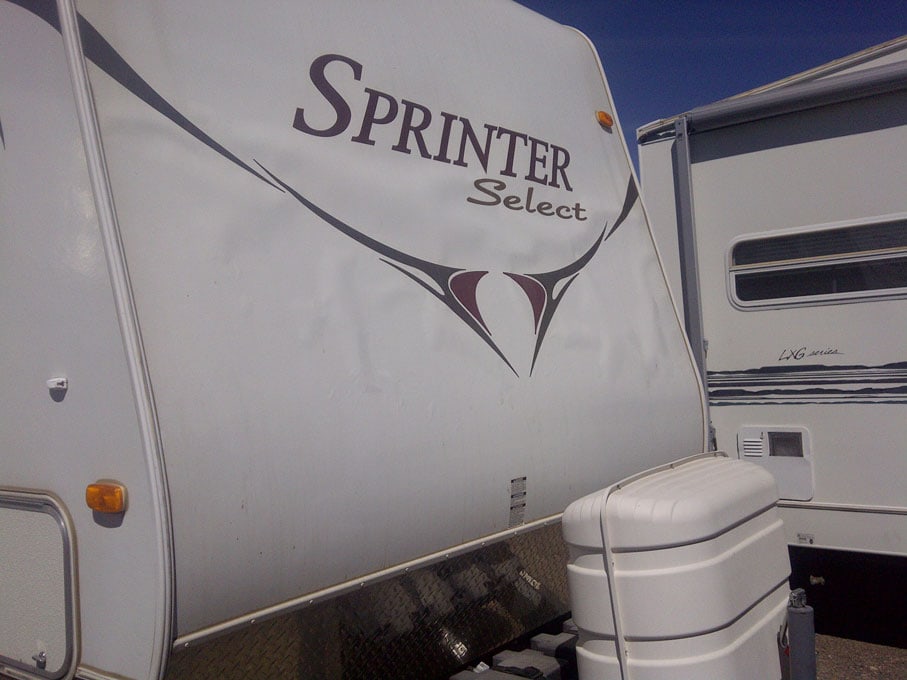Going camping is a good time until you realize your RV’s hot water isn’t working. But don’t worry – with a little RV water heater troubleshooting, you can save yourself the inconvenience of packing up camp and heading to a repair shop.
Keep reading to learn how to troubleshoot your RV’s water heater.
This article covers everything from common problems to DIY fixes. When you’re done, go enjoy your camping trip without a hitch!
A Brief Overview of RV Water Heater Operation (& Common Problems)
RV water heater troubleshooting is relatively simple if you understand basic operations of the water heater. You need a book to cover everything that can go wrong with an RV water heater.
But this article discusses a brief overview of RV water heater operation. I also share the most common and easily solved RV water heater problems below.
As an RVer, there are few things more frustrating than when things in an RV don’t work properly. And, when that thing happens to be your water heater, it’s even more upsetting. No one likes a cold shower!
Mike @RVBlogger
(I do not cover Troubleshooting tankless RV water heaters in this article)
Overview: The 3 Types of RV Water Heaters
The most common types of water heaters found in RVs contain a tank primarily heated by the burning of propane gas. Some may also contain an electric element in addition to propane. The element can be used in conjunction with propane, which heats water faster.
Manual Gas Valve
In this type of RV water heater, the gas valve controlling the propane is manually activated. That valve is located on the exterior side of the RV. It utilizes a standing pilot light which has to be lit from the outside of the RV. These are typically found on basic or older RV models.
DSI (Direct Spark Ignition)
This is the most common type of water heater in today’s RVs. These models allow the user to flip a switch inside the RV to light the propane burner on the water heater. Here’s how a DSI water heater works.
Electric
RV water heaters often have a submerged electric element. This part heats the water within the tank.
RV Water Heater Troubleshooting Questions to Consider
Before you attempt to fix an RV water heater, first determine why it is not operating as designed.
Working with propane and 120-volt household electricity can be dangerous. Take your RV to a service center if you are not familiar with safely working around these two energy sources.
Next, verify that your water heater problem is not the result of a supply issue. This is what you need to troubleshoot:
Is pressurized water reaching the water heater inlet?
This is easily tested by opening the pressure relief valve located near the top of the water heater. Use caution when opening the valve. Scalding can occur if hot water is present.
If water rushes out, it is not a supply problem. Make sure the bypass valves used for winterizing are not in the bypass mode. This mode prevents water from reaching the water heater before testing.
Are your propane cylinders filled?
Make sure your propane cylinders are full. Are they turned on? Check to ensure your other propane appliances are operating correctly.
What happens when you try to light the water heater? Watch and smell for any signs of propane coming through the gas valve.
Not sure if propane is coming to the water heater? Follow the steps below.
First, ensure that no nearby ignition sources are present (such as your RV refrigerator running on propane, or a catalytic heater in operation).
Now “crack” open the gas line where it enters the gas valve. Pay attention to any smells or sounds coming from the line.
Or, spray soapy water on the gas valve fitting. Soap bubbles will appear around the fitting if propane is present. Secure the fitting when done. Then check for leaks using soapy water sprayed onto the fitting. Alternatively, you can use one of the other propane check tools and methods listed here.
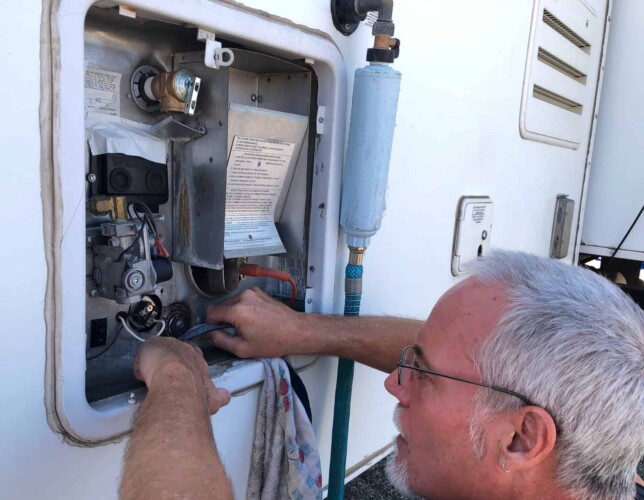
Do you have 12-volts DC (aka battery power) reaching the water heater?
If you have a DSI water heater, you need to verify that 12-volt DC power is reaching the water heater when the water heater switch is turned on inside the RV. Look for a wiring schematic in your water heater owner’s manual. This can help you locate the incoming power lead.
Do you have 120-volts AC (aka shore power) reaching the water heater?
Now check for 120-volts AC (aka shore power). If your water heater is equipped with an electric element, verify the switch(s) controlling the electric element is turned on. Ensure 120-volts is present by safely using a volt-ohm meter (also called a VOM or multimeter).
A 12-volt test light and volt-ohm meter should be part of every RVers electrical test kit. These tools are helpful in RV water heater troubleshooting.
How to Fix Your RV Water Heater
What if you didn’t find a supply issue using the above steps? Here are the most common problems with RV water heaters and how to (hopefully) fix them.
Manual Valve RV Water Heaters: Common Problems and Repairs
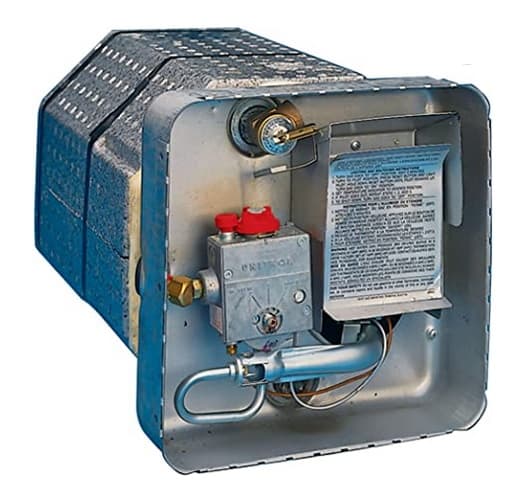
The pilot light won’t stay lit.
Step 1: Make sure the thermocouple is free of soot or corrosion. Check to ensure it’s centered in the flame of the pilot light. Also make sure it is screwed in tightly to the control valve.
Step 2: Remove and clean the pilot burner, pilot orifice, and tube. Only clean the orifice with compressed air. Otherwise, drill bits and other abrasive items can enlarge the opening.
Did either of the above two steps fix your RV water heater? If not, you likely have a bad thermocouple or control valve. Click here on how to test a thermocouple using a volt ohm meter.
Other common issues with Manual Valve RV water heaters
| The pilot stays on, but main burner won’t light. | Is the valve in the “On” position? Is the thermostat turned up? |
| Check for obstructions in the orifice. | Clean if needed. Use compressed air. |
| Pilot light is lit, but no gas flows from the valve when turned to the “On” position. | Valve most likely needs replacing. |
NOTE: Gas valves are not serviceable. Repair should never be attempted.
DSI RV Water Heaters: Common Problems and Repairs
Here are typical issues and fixes If your RV has a DSI water heater.
The DSI water heater won’t ignite.
Did you turn on the water heater switch inside the RV? If nothing happens, here’s what to do.
Check to make sure 12-volt power is reaching the control board. Voltage can be interrupted by the thermostat or high limit switch (which has a reset button).
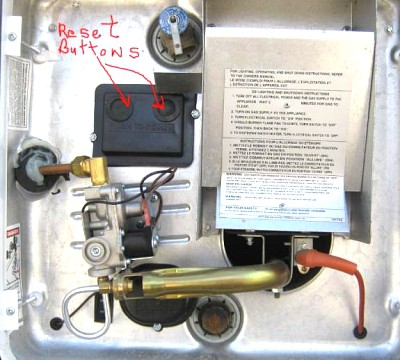
When 12-volt power reaches a properly grounded control board, three things should happen:
- The board will begin discharging high voltage to the igniter.
- Then the board will send 12-volts to the gas valve.
- The board will sense if a flame is present. If so, it continues sending 12 volts to the gas valve. If a flame is not present, the board stops power from reaching the gas valve.
If items 1 and / or 2 do not occur, check the fuse in the board (if equipped). Is the fuse good? If yes, the board is most likely defective and needs replacing. Most RV service centers have a circuit board tester that can check all three functions of the control board.
Sparks appear at the igniter. But the burner won’t ignite.
No gas coming from the valve? Verify grounded 12-volt power is reaching the valve.
- Is 12-volt power present? If so, try lightly tapping the valve (it might be stuck). Otherwise, the valve most likely needs replacing. Remember: gas valves are not serviceable. Repair should never be attempted.
The valve opens, but there’s no gas to burner.
Check for obstructions in the burner tube and orifice. Clean with compressed air only.
The water heater ignites, but won’t stay burning.
- Check the wiring connections for the igniter. The electrical signal indicating that a flame is present may not be making it back to the board.
- Is the igniter in a center position? Centering allows it to ‘sense’ the flame. Adjust if needed.
- Clean soot or corrosion off the igniter
If neither suggestion works, the flame sensing circuit in the circuit board is probably bad. This circuit is what causes the gas valve to close after initial ignition.
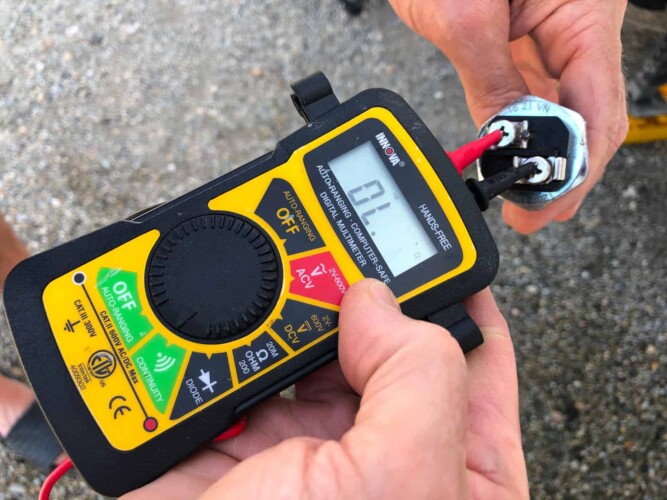
How to Troubleshoot Manual and DSI RV Water Heaters
Does the main burner “roar” excessively? Do you see soot around the exhaust port? Or, is the flame yellow? If your answer is “Yes!” to any of these questions, here’s what to do:
- Make sure the burner tube is free of obstructions, like spider webs, wasp nests, etc. Clean as needed.
- Your air / gas mixture is probably incorrect. Adjust the air flow per the manufactures instructions until the flame is blue in color.
Check the Electric Element
If there is no hot water when plugged into shore power, verify that 120-volts AC is reaching the element. Voltage can be interrupted by the thermostat or high limit switch (which has a reset button). Here’s what to do:
- Turn the RV power off.
- Then disconnect wires from the electric element.
- Now check the element for resistance using a volt-ohm meter. Your RV water heater owner’s manual lists The correct resistance of your electric element.
If no resistance is present, the element is bad and needs replacing.
- Make certain there is water in the water heater tank when operating on electric. An un-submerged electric element quickly burns up.
Watch This Video About RV Water Heaters
Here is a helpful video outlining the different components of RV water heaters, what they do, where they are located along with maintenance and some additional RV water heater trouble shooting tips.
RV water heater troubleshooting can be easily and quickly performed. A little basic knowledge and a few tools go a long way. I hope this information helps you when your water heater acts up.

